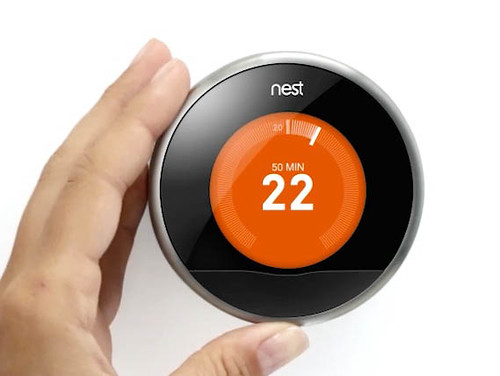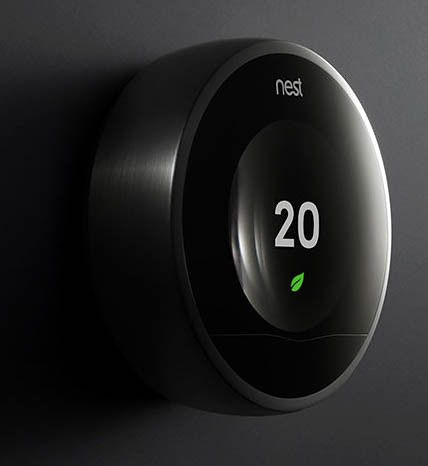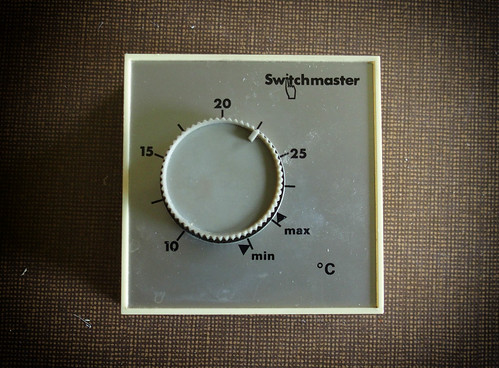
My bicycle is still blogging away quietly most times I ride it, and since I started using tapiriik, it copies similar information to a couple of other health analysis sites as well.
Now that there's a renewed interest in health applications we can expect an armful of smart watches to wind up in the stores by year end. At present I'm pretty comfortable with the (invisible) fitbit, which is a useful daily tracker but without needing to light up one's wrist.
As well as this Personal Area Network stuff, I've been turning attention to the Internet of Things, and the related Innernet of Things, which are the basis to link ever increasing amounts of home systems together. My recent experiments have been with a mainly unnoticed device - the home thermostat.
We've replaced the old clicky unit with one of the nest devices, somewhat jazzing-up a relatively mundane task.
The nest replaces the room-style thermostat with a combined thermostat and day-to-day programmer, which uses heuristics and sensors to dynamically determine the settings. As well as a wi-fi link to the home network, it has a separate and persistent Zigbee wireless protocol between the thermostat and a small unit connected to the boiler/pump system.

The end result provides a remarkable range of capabilities. As well as the normal temperature up/down control, it learns the rate of heat exchange in the environment and also monitors whether anyone is at home, potentially dropping to an economy setting when everyone is out.
Our smoke detectors also have motion sensors, which the nest wirelessly hooks into to improve motion coverage. It uses the postcode to collect weather information. We've also set it to send its telemetry to the cloud, so that the temperature and home heating use can be analysed and adjusted remotely from a phone or browser.
A catalyst for this was a recently quick energy audit as part of the annual gas and electricity service provider review. In our case I am certain that the improved intelligence in the new device will save a decent chunk of cash. For us, probably at least the cost of the unit in the first year, compared with the previous 'set to stun' heat setting that has been routinely deployed.
Some might say this technology is giving away ever more information to the world of corporate Big Data, with naysayers predicting the thermostat will start running adverts on its display. Okay, it may also have a bit of a HAL vibe, but I'm finding that this all presents interesting ideas for the connected home.

No comments:
Post a Comment